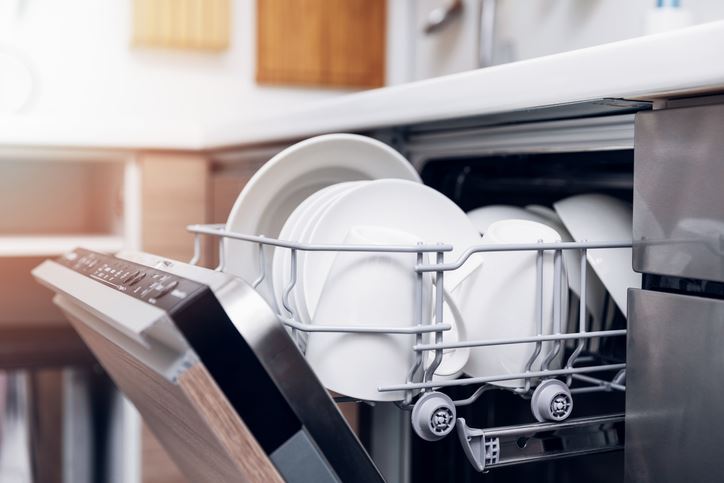
You’re a busy homeowner who needs the answers to a common drainage problem fast. We believe there’s nothing more precious than time, time to spend with your family or doing the things you enjoy. The team at Blue Star can make solving common plumbing issues a snap. We put our best experts on the job to collect the most critical info you need to know when your dishwasher or washing machine isn’t draining. Use our guide to keep your plumbing in great shape.
Dishwasher Drains
Your dishwasher is a mysterious thing to behold if you’ve never studied its inner workings. That’s why we’re here. You’ll first notice a problem when you open your dishwasher after a load and see water sitting idly on the bottom. You can try rerunning it in case it was an issue with the cycle; otherwise, follow these steps to clear it out:
- Turn on your disposal: Your dishwasher connects to your garbage disposal through a drain hose. When you run your dishwasher, the dirty water and debris empty through this hose. If something at your disposal isn’t entirely cleared, it can prevent the dishwasher from fully draining. Try the disposal first, and if that doesn’t settle it, then move on to the next step.
- Inspect below the water: You might have to soak up or shovel out some water to see what’s going on at the bottom of your dishwasher. Large pieces of food or even broken glass can block water from draining completely.
- Clean your filter: Anything that cleans probably has a filter, including your dishwasher, and just like other appliances in your home, you should change this filter after a time. Every dishwasher is different, though, so you may need to look in your owner’s manual to find and remove your filter.
- Check the drain hose: To drain correctly, the dishwasher’s connecting components need to be in good working order. Your hose can get worn down or clogged. Make sure there aren’t any clogs in your drain hose by pushing a drain snake through it. If there isn’t a clog, check the hose’s connections for faults.
Washing Machine Drains
Your washing machine is another crucial cleaning unit in your home. Without proper drainage, your clothes are forced to sit in their filth. To return them to their full wearability, use the following guide to solve your drainage issue:
- Test electrical issue: If your system is still on and won’t drain, try a master reset. Unplug your washing machine for one minute. After the minute is up, plug the machine back in and open and close the door six times within 12 seconds.
- Check lid switch for top-load washers: Not all plumbing appliances require a plumbing issue. For top-load washers, a lid switch ensures the washer’s lid is fully closed, allowing it to drain. Try pushing the lid switch to empty the drum. If this works, you’ll need to adjust the pressure from your lid.
- Drain hose maintenance: The same rules for a dishwasher drain hose apply for a washing machine drain hose. Make the standard check for worn parts, loose connections, kinks, or clogs. Always be ready for a quick release of water, though, if you do find an issue with your drain hose.
- Clean the water level valve: This valve is similar to the water fill valve in your toilet. If the valve is worn out, it can’t maintain the water level properly. You can find your water level valve behind the control panel. Check the tube leading to your valve for obstructions. Additionally, clean your valve with a vinegar-water solution for any corrosion.
Of course, some situations are out of the ordinary. We can help get to the bottom of your issue promptly and return your appliances to excellent condition. If you never want to deal with a drainage issue again, call Blue Star for regular plumbing maintenance.
